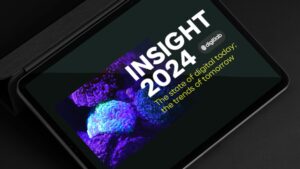The digital world has disrupted our marketing worlds and changed the way business communicates with its customer. Social media has opened the door to two-way conversations, data gives us a better understanding of our market and mobile makes our message more accessible to the general consumer.
Over the past few years we have placed much focus on developing digital channels to make the most of social media, mobile and data collection, however I believe that this focus has swung business to the opposite end of the pendulum. Focusing too much on digital channels and not the consumer themselves.
Digital highlighted a primary shift that consumers wanted business to make. To become more relevant, personal, useful and thoughtful. To design products and experiences that are actually useful and exciting.
In considering this challenge I have found that we need to redesign our customer experiences with these shifts in mind while still considering the person at the end of the experience. To find a balance between the physical and digital experience, to blend the two experiences into one serendipitous occasion that excites and intrigues customers.
“SMART Customer Experience” is a framework that I have developed after research into a number of customer experience frameworks. It speaks to the technologies that matter and the need to find the right application in your experience. A simple acronym in SMART – Social, Mobile, Agile, Researched, Transforming. I would like to share three of these these briefly for you to consider in your customer experience design.
Social
Behind social media lies the consumer insight that customers want to connect with people, brands and business. They want to be able to share in a conversation, to be heard, to listen and add value. This is evident in successful programmes like My Starbucks and Idea Storm where customers can add ideas to a network and watch them come to life as the companies interact with their customers to develop new products together.
When designing and experience that is social we need to focus on the customer need to connect, share and contribute rather than just the platforms available.
Mobile
The power of mobile is evident in how many people own a mobile phone but as wearable tech like The Dash , Google Glass, Pebble watches, Fitbit coming onto the market we need to understand the fundamental reason why mobile in so important in our customer experiences.
The power is in context. Mobile devices (any mobile device) helps us create contextual messaging, immersive experiences and accessible information.
In designing SMART Customer Experiences we need to ask ourselves how we can create connections with customers that are more meaningful and that speak to them at the right time, in the right way with the right message.
Agile
Agility is one of the most prized organisational goals. The ability to respond to market conditions and customer needs quickly is often what sets companies apart from their competitors. Agility is one of the most important business attributes that will drive them to becoming more customer centric.
An organisation can learn from social business principles that help business collaborate easier and faster with the right decision makers in the organisation. Internal enterprise social networks are useful to breaking through hierarchy, corporate structures and processes that slow down the initiatives that respond to customer and market needs.
I was recently subjected to a local banking process in getting a service activated. The silo’s in the organisation had such poor communication systems internally that it took them three months to notify me that the service had been approved. In those three months I had become more and more disgruntled at the bank for the ineffective and poor service delivery.
Whether business utilises social business techniques or not, the principle is clear that an organisation becomes more agile and customer centric when people in the business can communicate quickly with the decision makers in the business.
Accelerating employee relationships will create an innovative, customer centric business with the agility to solve problems quickly.
Researched
David Ogilvy once noted that he sees an “increasing reluctance on the part of marketing executives to use judgment; they are coming to rely too much on research, and they use it as a drunkard uses a lamp post for support, rather than for illumination.”
Consumer Research, Big Data Mining, Online Conversation Tracking and a host of other research tools are only as valuable as the insight that they illuminate. Customer experience designers need to focus on measuring the right aspects of their experience. To turn big data to smart data, research to insight and ultimately the opportunity to improve the experience.
Yes, we live in a world where we can measure everything. That’s does not mean everything is worth measuring.
Transformation
When a customer decides to purchase a product or service they are choosing to adapt their lives to include that product or service. Some adaptions are easy and others are harder. Customer experience designers need to look carefully at how they can help customers change their lifestyles to accommodate their new purchase.
A great example of how this transformation is implemented into a customer experience is found in the book Smart Change by Art Markman. He describes how Procter & Gamble helped increase sales of the air refresher Febreze by redesigning a bottle that originally looked like a window cleaner bottle (and cried out to be stored in a cabinet beneath the sink) to one that was rounded and decorative (and could easily be left out on a counter in a visible spot).
[box type=”note”]Need to dive into this in more detail? Contact me to find out my availability to run a SMART Customer Experience workshop with your product design and marketing team.[/box]






